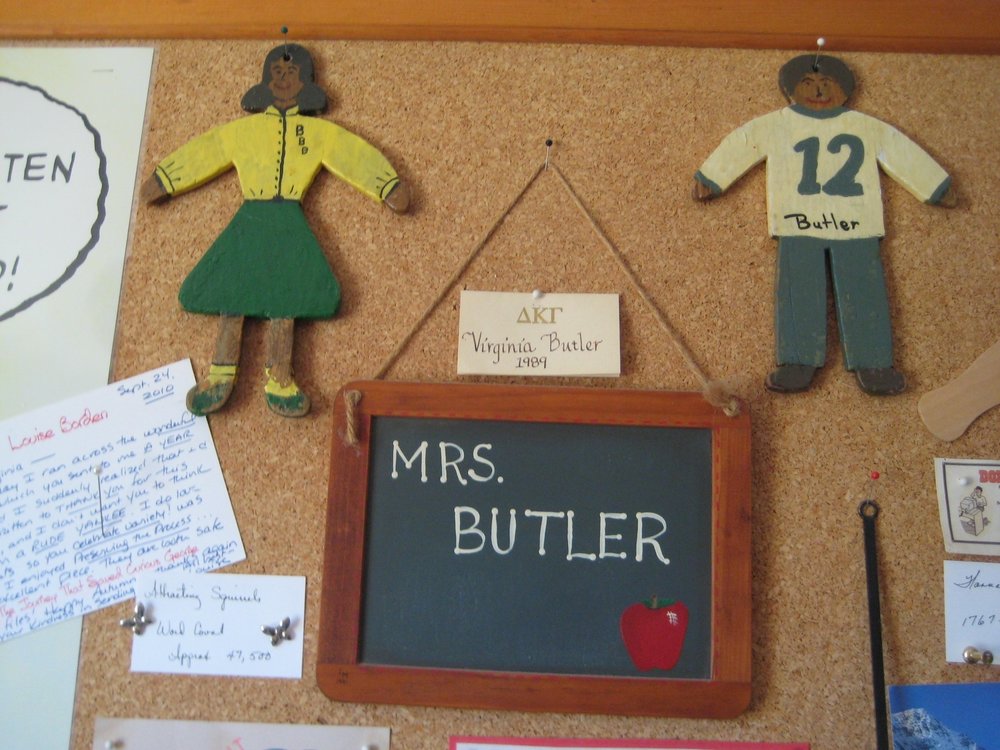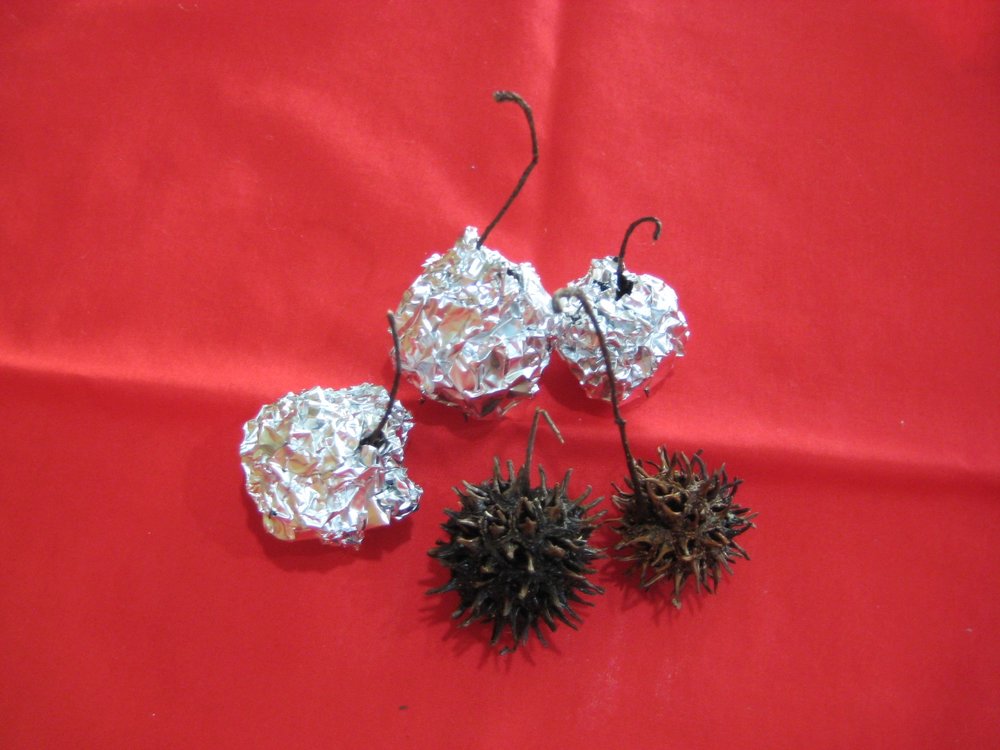
During the past two years, I have delved into the extensive Ezra Jack Keats archives in the de Grummond Children’s Literature Collection at the University of Southern Mississippi. Talkative nerd that I am, I’ve shared the excitement of my “finds” with anyone who would listen. [I’ve noticed some people can listen and roll their eyes at the same time.] It’s been interesting how many people have been surprised to learn that Keats was Jewish. “I thought he was Black!”
Logic forms the basis for this pre-judgment. Most people realize that Keats made a Black child named Peter the protagonist for his picture book The Snowy Day at a time when this was an innovation. Their assumption is that the author must have been Black to think about it.
While that assumption is wrong, Jack did experience and understand prejudice beginning when he was quite young. He learned during his school days that teachers and neighbors were fearful of what might be contained in gifts of food from a Jewish kitchen. I was astounded at his story of taking a decorated cake to his school principal – his father’s attempt to compensate for Jack's many sick-day absences from school. Only after Jack assured the principal that it was “bought” rather than homemade did she accept the cake.
The episode brought back memories of a different kind of pre-judgment based on smell from my second grade teaching days. On student report card conference day, an aroma preceded Becky’s Korean mother as she headed to my room. I pre-judged that something good was on the way. When Mrs. Peach’s turn came for her conference, she set a plate on my desk – piled high with spring rolls still hot from the stove.
“I know Becky’s doing fine,” she said. “Eat one now and take the rest to your family for supper.” I ate the delicious spring roll and assured her that her assessment was correct. Becky was indeed an excellent student.
Remembering how much my family enjoyed stepping out of their Southern “chicken and dumplings” box for supper that night, I felt sad for the teachers, neighbors, and principal who were afraid of Jack’s mother’s food. According to those who knew, she was an excellent cook.
Who knows how many things we miss when we consciously or unconsciously make a decision based on pre-judgment? Unless, of course, the preconception is based on something as solid as an aroma.
Fifty-Year-Old Phantom Tollbooth - In Excellent Condition

The Phantom Toll Booth, first published in 1961, resided on my “Books to Read” list until this week. I knew I was in for a good read by the time I reached page 19 when Milo decides to leave the Whether Man, not the Weather Man, to look for someone “whose sentences didn’t always sound as if they would make as much sense backwards as forwards.”
The Punny book [and yes, I spelled that right], is filled with ridiculous word plays, skewed logic, and idiotic idioms. It they don’t tickle your funny bone, you need to visit an orthopedist for an x-ray to see where it’s broken.
Morals and words of wisdom abound as Milo sets off to rescue the princesses Rhyme and Reason, but for heaven’s sake, don’t tell this to a child and spoil the fun.
A few of my favorite samples:
• Tock on the possibility of words becoming confusing: “Only when you use a lot to say a little.”
• The Soundkeeper: “You can’t improve sound by having only silence. The problem is to use each sound at the proper time.” [My choir director would probably agree with this one.]
• Canby: “Every time you decide something without having a good reason, you jump to Conclusions whether you like it or not. It’s such an easy trip to make that I’ve been here hundreds of times.” [And so, unfortunately, have I.]
• Dodecahedron: “As long as the answer is right, who cares if the question is wrong?”
• Dodecahedron, again - just in time for a political year: “They’re all the wrong way. Just because you have a choice, it doesn’t mean that any of them has to be right.”
Then there was the character familiar to most of the writers I know – Terrible Trivium, the "demon of petty tasks and worthless jobs, ogre of wasted effort, and monster of habit who keeps one busy on easy and useless jobs so that they never have to worry about the important ones that are so difficult." [Think sorting paper clips to keep from editing that last chapter.]
My friend Jeannine Laughlin-Porter, long time library guru at the University of Southern Mississippi, hates age labels on books saying, “A good book is a good book,” and I concur. This book lends itself to reading aloud, shared by a child who gets one layer of meaning and an adult who adds another.
Happy 50th Anniversary to The Phantom Tollbooth!
You Might Live in South Mississippi If...

A December appointment with the dentist brings a fellow patient dressed in pants and a sweater, accented at the neck with a warm scarf whose feet sport glittery flip-flops and raspberry colored toe nails.
The front page of the newspaper regularly carries sports stories covering the top half of the front page with even more details found in the sports section where one might expect them.
A walk down the hill passes a neighbor whose shed features a window box filled with brightly colored artificial flowers.
Every occupant of every car that either meets you or passes you up on the walk waves a friendly hello whether you know them or not.
Roses still bloom in December.
As much as an inch of snow brings talk of business and school closings.

Winter consists of a handful of days scattered toward the end of December, a couple of weeks each in January and February, and another handful of days scattered through the first of March.

And if you live in South Mississippi, you’ve got to love it!
Ghost Question
Unfinished Desires by Gail Godwin, is a very interesting and curious book with a play within a novel. The frontispiece has a quote that comes from the fictional unpublished play.
…Do not shrink if on your path
You meet a solitary ghost,
Ask it, “What did you love most?
And what have you left undone?”
Prologue to Suzanne Ravenel’s 1931 school play, THE RED NUN
Surprisingly, the quote left an even greater impression on me than the novel itself, although it was a very good read. I began to make a list of what I’ve loved and what I’ve left undone.
What I have loved most:
• Being a military wife [helped that I had a good military husband!]
• The two boys and a girl that grew up in my house – and the other family members they eventually added
• Friends – as the adage goes – the golden oldies and the silver newbies
• The companions the two boys and a girl brought home for snacks or supper
• Teaching in school and at church
• Writing
What I’ve left undone:
• Becoming a nurse
• Dusting
• Picking up Anna at the dentist when she was in sixth grade [On a military base, she had an easy walk to get there after school and to get home when her appointment was finished. I was supposed to meet her and get the dentist’s report, but I forgot and went home instead. She reminds me of this failure from time to time when it suits her purposes.]
• Climbing Mt. Everest
• Learning to swim
Of course, the lists could go on indefinitely. To tell the truth, the only thing I regret from this undone list is not picking Anna up from the dentist.
I don’t really make resolutions as the new year begins, but I do tend to evaluate where I’ve been and where I’m going. Since there are only seven days in a week with only twenty-four hours per day, I think I’ll use the thought from this question in 2012 to weigh its opportunities so I can omit things I would not miss if I left them undone and focus on those I love most.
A Bit of Baylor 'Rithmetic
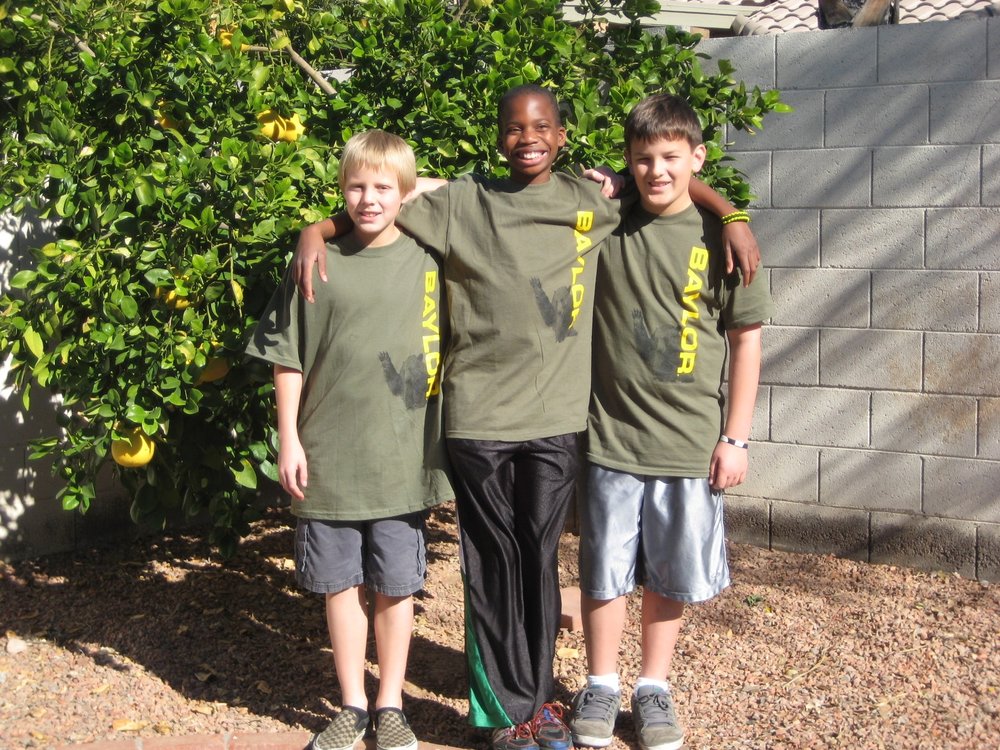
2 – number of sons who graduated from the school
3 – as in Robert Griffin the third, Heisman trophy winning quarterback
3 – number of “twins” wearing Baylor shirts – actually cousins, one from each of my children’s children who labeled themselves “The Three Twins” two years ago when they got the first set of shirts
8 – rushing touchdowns by Baylor, tying the bowl record
8 – the number of years during which I deposited my paycheck – only to forward most of the money to Baylor [Al’s check covered mundane things like groceries.]
12 – total rushing touchdowns, a tie with Texas Tech and Air Force in the 1995 Copper Bowl for the most ever
10 – number of Butler family members watching with varying intensity to the Alamo Bowl, including one who kept an eagle eye out to be sure none of the players stepped in “the white space”
123 – total points scored during regulation play, a record in bowl history
1,397 – a bowl record for total offense, bettering the previous record by 186 yards
Immeasurable – the total lack of defense by both teams
Many more – our hopes for the number of successful Baylor Bear football seasons
Invaluable – watching the Alamo Bowl Game with the two Baylor graduate sons and their families as Baylor defeated Washington by a score of 67-56
Sic ‘em, Bears!
Resolutions I Won't Be Making

Reducing My Intake of Coffee – According to Good Housekeeping Magazine’s medical authority, coffee has more antioxidants than spinach, blueberries, and orange juice. Other authorities also say it helps prevent Alzheimer’s Disease. [I wasn’t going to make this resolution anyway, but this makes it sound like a health decision.]
Giving Up Chocolate – Dark is my favorite kind, and we all know how good that is for you.
Using the Dining Table for Dining – There are other places to eat, and since the table is handy to my office, it holds stacks with research, works-in-progress, how-to piles, etc. While it may not look organized to the naked eye, I pretty much know what is in which stack.
Removing the Weeds [AKA Wildflowers] from My Garden – Queen Anne’s Lace reminds me of my 
Keeping a Spotless House – Really, what’s the point? I’ve been to a lot of funerals and never once heard in a eulogy, “She kept a spotless house.” I try to keep mine clean enough to meet health standards.
Going Shopping More Often – Shopping as a sport lost its pizzazz when my favorite partner grew up and went away. [Yes, Anna, you can actually be the favorite here.]
Taking Life More Seriously – I can be serious when I must [ask my children or former students for proof], but looking for the funny side makes life much more enjoyable – another thing I learned from my father.
Cutting Back on Reading Time – Ha! I even have a good excuse for this one. Every how-to book I’ve read on becoming a writer says if you are going to be a writer, you must first be a reader. So when you catch me with my feet up, cup of coffee and dark chocolates on hand, engrossed in a good book – I am actually working.
Nostalgia for the Waltons
Those were the days!Recently almost all of the original Walton family appeared on the Today Show to celebrate 40 years since the show began. Cast members observed that the show is no more dated now than when it first ran. The story covered the years of the Great Depression through World War II and originated from a semi-autobiographical book by Earl Hamer, Jr. called Spencer’s Mountain.
The cast members were remarkably ageless and seemed quite proud that among the group there had been no arrests, no convictions. Because they spent so much of their lives with each other for those years, they developed their own family-like structure, complete with practical jokes. Richard Thomas, who has gone on to other roles, said the standard farewell after a fan has met him, no matter the circumstances is, “Good night, John Boy.” He ended this anecdote by saying, “It’s just wonderful.”
Other cast members said they included their fans in an extended Walton family and embraced those who wanted to talk when they met them out in public – most of whom asked to hear them say, “Good night, John Boy.” I found it refreshing that all of them seemed to enjoy the remembrance rather than resenting fans who took up their time. I also found it satisfying that their values in real life were not all that different from the people they portrayed.
Seeing them all together sharing the spotlight in the back and forth interview brought back good memories of our family gathered around to watch TV and wind down from our busy day as we relaxed before bedtime. The Waltons joined The Rockford Files, The Bill Cosby Show, and Gomer Pyle as some of our favorites.

I taught in a Department of Defense school in Germany during some of the years when the show was on its first run. Our faculty, encouraged by a wonderful principal, formed a similar extended family bond where we shared family stories over lunch in the faculty lounge. One day as I finished an anecdote about my kids, a colleague said, “Your family sounds just like the Waltons.” I took it as a compliment. And there may be just an element of truth, because I - like Olivia - find the best Christmases ever to be the ones like this when the whole family is together.
The Flawed Manger Scene

The answer is, “Too many memories.” Our children were small when we got it. They stood and gazed at the Baby Jesus, often rearranging the animals or the Magi. As they grew older, they found a prominent place to display it each Christmas. They loved setting it up and remembering in Texas, Germany, Louisiana – wherever the Army designated as home.
One memorable Christmas we lived in Germany atop a hill overlooking a snow-covered village centered by the church steeple. Right after Thanksgiving, we decorated our Christmas tree. The children chose the wide ledge in front of the picture window for the nativity. Since our German neighbors waited to trim their trees until Christmas Eve, we invited the community kindergarten children to come up to see our tree and have cookies and punch.
Their faces lit as they “Oohed,” in wonder at the Christmas tree. They examined each ornament, but soon they moved to the window and our Sears manger scene – a poor match in my mind for the beautifully hand-carved nativity scenes found in their Chriskindle markets. They drew us into their awe as they sat quietly on the floor around the crèche watching as though they waited for the baby to cry.
We have new crèches, nicer and in better shape including one from Bethlehem. Still, this defective one always takes the place of honor. Maybe it is appropriate after all. For didn’t the Christ Child come into humble surroundings for that which was imperfect - to heal the brokenhearted, to bind the wounds of the injured, to bring sight to the blind, and to set at liberty those who are captive?
Gloria or Three Blind Mice?

“Why settle for ‘Three Blind Mice’ when you can play the ‘Gloria’?...not Bach’s ‘Gloria’…, Yours! Your ‘Gloria’ lives within you. The greatest sin is not finding it, ignoring what God made possible in you.” [page 6]
My first reaction was in favor of the quote, thinking it was a glorified version of the Army’s slogan, “Be all you can be.” Then I turned it around and looked at it from another angle. What if “Three Blind Mice” is the best you have? Does that mean you’re insignificant?
I have three children who could play Bach’s “Gloria” from the “Gloria” that resided within them – either on the piano or cello. They tried to hide their smirks when I took a turn on the home piano.
With nine months of piano lessons from a very good high school piano student and not a lot of natural talent, my claim to musicianship is that I can play anything a second grader needs to sing. My “talent” actually came in handy for a while. In this day when the arts are the first thing to go in educational budget cuts, the music program in our school with twelve second grade classes disappeared.
I’m sorry to say we had taken for granted the talented young musician who loved teaching children. He knew how to get them to count time, stay on pitch, and have fun all at the same time. He could both do the “Gloria” himself and teach it to children.
We were left with a makeshift program composed of my “Three Blind Mice” and other childhood standards. But the children responded to my demands that they keep time and sing on key. They learned that “loud” and “good” are not synonyms. And they reported at home that Mrs. Butler was a wonderful pianist. [My smirking children at home couldn’t resist laughing out loud at that report.]
So, I think I’m back to loving the quote. With an appreciative audience, I enjoyed doing a mean version of “Mr. Frog Went A-Courtin’.”
I Plead "Not Guilty"

The writer goes on to quote Lord Francis Jeffery’s opinion that the book has done more good than all the pulpits in Christendom. While this is probably an exaggeration, I agree that one is deprived who has not heard Dickens’s story read aloud in its original version.
To this end, and even before I knew I could be sued, my three heard A Christmas Carol annually either nightly under the tree or on a long drive to visit grandparents in North Mississippi from wherever the Army had selected as home for us. If you look carefully at the picture, you can see which one did not pay attention as well as he should.
By the time our children outgrew being my captive audience, I had another one in junior high students. [This clears their parents of guilt as well.] I read it to them every year and waited for my favorite part – the reaction on their faces when they heard the Ghost of Christmas Present throwing Scrooge’s words back in his face. “Are there no prisons? Are there no workhouses?” We followed with some good discussions about the girl Want and the boy Ignorance who clung to the ghost’s robe and whether the ghost was correct in saying the boy was to be the most feared.
Video versions of A Christmas Carol crowd TV schedules this time of year, but they inevitably leave out one of my favorite parts or do a pitiful rewrite – such as having Scrooge show up at the Cratchit’s home instead of his nephew’s on Christmas Day, which also negates Dickens’ fine ending of Scrooge “catching” Bob coming in late the day after Christmas. But it’s okay, I have several copies to read – the worn Scholastic copy I read to junior high students and copies my children have given me because of their fine illustrations.
In the hoopla of the best set of wishes during this season, I return to Tiny Tim. I’ll go out on a limb and say that his very inclusive greeting got it right long ago, and I have borrowed it as my hope for each of you and all of us for the season. 
10 Good Things About Main Street Books

1. When they Facebook Friend you, they really mean it.
2. Jerry takes your list of hard to find books and searches for them, but checks before ordering to see if you really want to pay $75 for a rare children’s picture book. [No, thank you.]
3. Diane hosts an intimate lunch for her patrons with a Mississippi author [Susan Haltom] of a book about the garden of another Mississippi author [Eudora Welty]. The excellent more-than-a-coffeetable book is One Writer’s Garden with Eudora’s garden story and great photographs and memorabilia pictures.
4. Diane’s mother Norma serves a delicious home-cooked meal at this lunch.
5. They actually know what is on their shelves and can find it for you. They also do “hand-selling,” meaning they make a match between their customers’ reading tastes and books they will enjoy.
6. They support local writers and supplement their stock of books with local art and products from the area.
7. When you request an order for a new book you’ve seen advertised, Diane just might remember that she had received an advanced reading copy and give it to you.
8. Diane holds a signing for you when you are a contributor to an anthology without waiting until you have a whole book to yourself. [Cup of Comfort for Sisters and Cup of Comfort for Families Touched by Alzheimer’s]
9. A local independent book store is said to contribute 3.5 times more to the local economy than a chain.
10. Now add a cozy place with character in a restored downtown building where you can go to browse, chat a few minutes, or sit and look through books until you make a decision, and you have a real community treasure.
If you’re in Hattiesburg, check it out. If not, I can only hope you can find a good independent with character in your neighborhood.
Wishing You a Cricket on the Hearth

Starring in the story is the good luck cricket who sings on the hearth with Dickens carrying his theme to chapter divisions called “Chirps.” If you pay attention, the cricket’s “good luck” rests in gentle reminders to those in the household of the good things in their lives and of the need to look beyond appearances to a more positive conclusion. In Dickens’ day, the book and the stage play it inspired were even more popular than A Christmas Carol.
Hidden in the fun little Victorian tale with its happily-ever-after ending is the story of The Blind Girl, who is deceived by her father Caleb in his description of their home as being comfortable with nice furnishings instead of the actual hovel that it is. The impetus for this deception is his own Cricket on the Hearth who inspired him to turn the girl’s deprivation into a blessing.
As I read about The Blind Girl, I recalled children’s author Carmen Agra Deedy in her delightful telling of her own story at last year’s Children’s Book Festival. Her account of her family’s life after coming to the United States as refugees from the Cuban Revolution was by turns touching, heart-warming, and funny. I wrote down a quote from her father that helped them deal with the difficulties they faced. “What the eye don’t see, the heart don’t grieve over.” He and Caleb saw life through the same lens. Perhaps her father brought his own cricket from Cuba.
Since this is Dickens, there is a finely woven moral with those in modest circumstances happily enjoying their friends and family, blessed with the accompaniment of the chirping cricket on the hearth. Of course, the stern money-grubbing toy merchant Tackleton makes his Scrooge-like change at the end with the cricket chirping merrily on the hearth.
As you can see, I tried to create an origami cricket for my hearth. I knew it would never chirp, but I liked the idea until I realized how inept I was at folding paper! But my imagination is alive and well, and I hear him singing his song of joy. I hope this season finds a cricket on your hearth, real or imagined, whose cheerful song of blessing reminders drowns out any longings for the unattainable.
Sic 'em, Bears

• A love for words
• Theological truths [He was a preacher, after all.]
• That girls are as capable, worthwhile, and essential as boys
• Grammar [He was more nit-picky about “who” and “whom” than any English teacher I ever had.]
But fall memory takes me to Saturday afternoons when Daddy and I sat at the dining table with the radio tuned to the Ole Miss football game, and he taught me to follow the action. Not only did he create a lifelong college football fan with a particular liking for Ole Miss, he made me almost as happy to hear a game as to see one. That came in handy recently.
I’ve been a die-hard Ole Miss Rebel through thick and thin, although never quite as thin as this year. I watch their games, no matter how bad it gets. Two weeks ago, as Mississippi State Bulldogs showed no mercy on the newly renamed Ole Miss black bears, I endured the first half. Never one to forsake my Rebels, I muted the sound for the second half so I could still see. But to improve my spirits, I brought my laptop in and tuned to the Baylor radio announcer to listen to the Baylor/Texas Tech game and heard the rout of the Red Raiders. I considered the absurdity that I was cheering for two sets of bears and wondered what Daddy would have thought about my getting a radio broadcast via computer.
This past Saturday was much better. TV carried University of Southern Mississippi’s Golden Eagles as they upset Houston, followed by the Baylor/Texas game. Mercifully, Ole Miss did not play. Our oldest Baylor son has convinced me that beating the Longhorns is the most important task of the Baylor Bears. He’s even launched a campaign to return a “Hex Tex” spell over the school, which may be working since this is two years in a row with a win over Texas.
The outcome of the game was not in serious question for long. Baylor has a Heisman quarterback candidate, Robert Griffin III [called “R G III” by the sportscasters, and sometimes just “III” by Baylor fans] with a great supporting cast in his teammates. I must admit I loved witnessing his long touchdown pass, seeing him connect to receivers with holes for making yardage, and watching him scramble ahead for first downs and touchdowns. [When comparing hearing vs. seeing, notice that I did use the qualifier almost.]
I’m looking forward to watching III play again on TV in the Valero Alamo Bowl on December 29, joined by two Baylor sons and the grandchildren they’ve indoctrinated. I’ll remember Daddy and hope that heaven has a little corner somewhere with an HDTV or a radio.
Yes, Virginia, there is...
Mama had little regard for Santa. She hated the New York Sun editorial “Yes, Virginia, there is a Santa Claus,” feeling it gave too much credibility to the rotund gentleman and cast aspersions on her good name (also Virginia). Except for church programs, carols, and the Christmas story, Mama endured Christmas with as little fanfare as possible. She stalled our badgering to get a Christmas tree as long as she could and got the tree down swiftly when Christmas was over.

Ultimately, we’d find one that would do. (One year we actually had to find two and put them back to back to have a decent shape.) Being the oldest and responsible, I would start cutting with the saw and succeed only in creating a fringe in the bark. Finally, Beth would say, “Oh, give me the saw.” She was always more adept with anything requiring physical dexterity. Somehow, she’d work a trench in the trunk and eventually get it sawed in two. We lugged the scratchy cedar home, and Mama reluctantly got it up and ready for decoration. She left the rest to us girls.
The tree lights saga began with at least one of the bulbs burned out which meant none of the lights worked. Playing musical chairs with a new bulb was bad enough, but sometimes more than one light was out which made it even more frustrating. Going to get a new string was not an option. What joy when we got a working bulb in every socket and the string came on! Then we got out our sparse collection of Christmas balls, wrapped sweet gum balls that had a nice hanging crook for a stem with tin foil peeled from the back of gum wrappers we had saved, and pulled out a new package of tinsel – Mama’s only purchase every year.
We four sisters had a good time discussing correct placement of each ornament and sweet gum ball and admiring our work as we went along. I didn’t even say anything when younger sisters got tired of separating the tinsel into single strands for the best effect and threw them on in clumps. I just went back later when they weren’t looking and fixed them properly. We all agreed every year that the tree was “just beautiful.”
I’ve often been accused of being like Mama, but on this issue we part company. I love the Christmas story, carols, and church programs just as she did. But I am on good terms with Santa Claus and take it as a personal favor that the name “Virginia” is in the Sun editorial. I like Scrooge so much I married his replica (he goes around saying “Bah, humbug” throughout the season), and I think the Grinch is kind of cute. I could go on, but I feel a need to stop and get my annual fix of It’s a Wonderful Life with its reminder that anyone who has a multitude of friends is rich.
'Twas the Day after Thanksgiving...

My husband skipped his usual retort, substituting a shrug and an eye-roll. On years like this, he usually says, “Nobody’s coming. There won’t be any need to drag out all that stuff.”
Like many blended families, we’ve adapted our habits to fit our situation – quite happily, I might add. Our oldest son’s marriage brought the bonus of three-year-old twin girls, our first grandchildren, to be joined about six weeks later by a grandson born into the youngest son’s family. Since the twins rotated Christmases between their natural parents, we began a tradition of having the whole Butler clan together on the years we could have them with us.
We also rotate locations so that our four families take turns with hosting duties or travel. This means alternating years of a rambunctious Christmas with the whole clan and a quieter Christmas with whoever is within reach or just the two of us at home. I enjoy both kinds – with the Christmas tree up and the house decorated. Two years ago, the family was at our house so there was no protest from my husband. He does see the need for decorations if somebody's coming.
This year the Butler crew, having added five more bonuses by birth or adoption to the girls and first grandson, will meet in Arizona – home for the twins, now juniors at Northern Arizona University, and their 11-year-old brother. Hence, nobody’s coming here.
Friday morning, Allen lugged the Christmas tree from the shed – still intact in its stand from last year. 
Incidentally, this tree may not smell as good, but it’s not nearly as much trouble as the first Christmas trees I remember. That story will wait for Thursday’s blog.
Gracias:Thanks
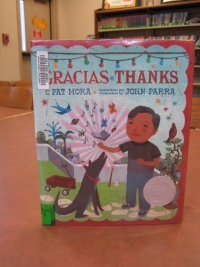
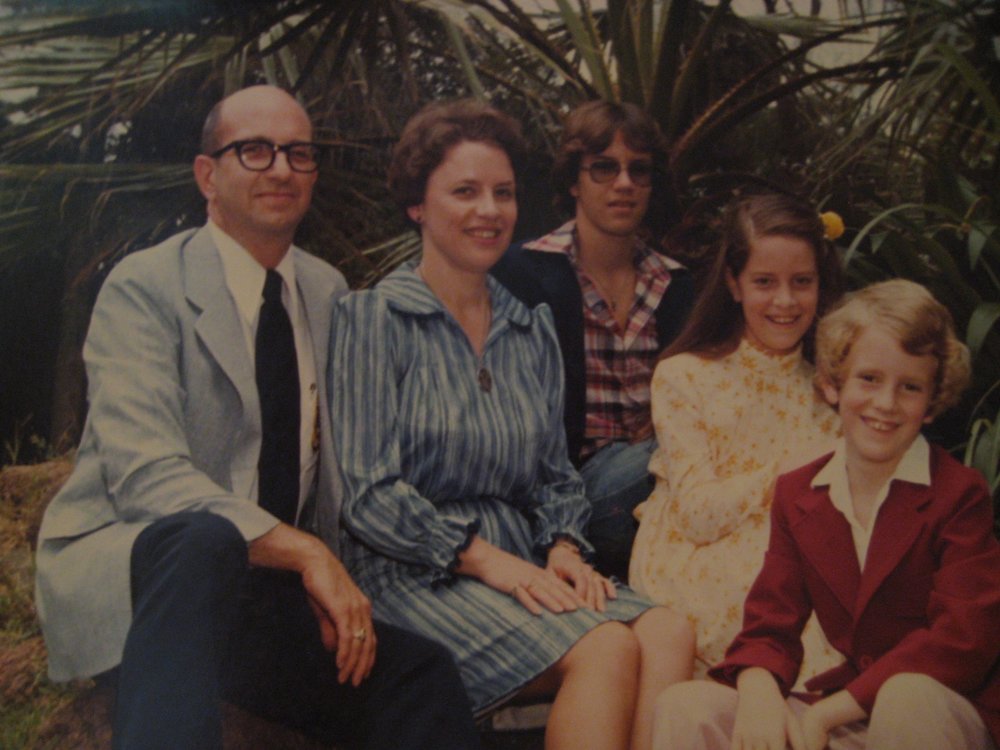
• For Allen – the young man with black wavy hair and a shiny red and white hardtop Buick convertible who caught my eye with his looks and my ear with his piano-playing. For his wearing well, long after the hair departed, through 50-plus years in multiple houses in six states and four countries. For the peace of his presence even when I’m in another room. For his opinion when an editor sends a rejection letter – “They must not have read it.” For his still asking before I leave the house, although I have worked long hours and have an income, “Do you need any money?”
• For Murray – the one who made us a family instead of a childless couple. For loving his ride with his Matchbox cars in the cubby in the back of the Volkswagen Bug that was our family car before it occurred to us how dangerous that was. For seeing the world through a warped view and making us laugh. For his music from Bach to Scott Joplin. For being the kind of big brother to his siblings that I wished for when I was a child.
• For Anna – who took a middle position and turned it into a role model of persistence. Whose tenacity as a first-grader in overcoming a tongue thrust made her a model for the following year’s students and fooled a college speech teacher who said, “I can tell you’ve never had any kind of speech problem.” Who knew the difference in giving up recitals and giving up piano and continues to bring joy to others with her music. Who loves presents but finds even greater joy in giving the exact right gift to someone else. Who holds fast to friends old and new.
• For Mark – the curly-topped blond who smiled early and often. Who completed the Anna/Mark duo that filled up our only child household. Who was the chronic accident that seldom waited to happen but always added another story to the family lore. Whose need to be in the center of the family created an obstacle course as we maneuvered around his six foot form sprawled in front of the TV watching a football game while doing his homework.
Following closely behind on this list are the people this Original Five brought with them into our lives, first their friends, then their spouses, and finally the really important ones – the eight grandchildren – but you don’t have time to read all I could say about them! Repeating Pat Mora’s question, I would ask, “What are you thankful for?”
The Raggedy Quilt
My great-grandmother, Virginia Catherine Adams, was born in 1866. Her family raised cotton. The Raggedy Quilt was made from cotton picked on their farm. They “carded” their cotton by hand, spun the thread, dyed it with blue indigo or brown walnut bark, wove the fabric, and made quilt tops. They put cotton batting between the layers like a sandwich. The back was usually a solid color.
Some quilts in those days were quite beautiful, but this one was made for warmth. Virgie, as she was called, probably made this quilt during her childhood or teenage years so it is about 150 years old. By time for her wedding, she was already an expert quilter and was praised for having the tiniest stitches at any quilting bee. She would have brought the quilt into her new home when she married Daniel Berry.
Eventually the quilt was passed down to Mama, who was her granddaughter. It looked quite worn out already when my three sisters and I were children. Mama let us do whatever we wanted with it. We played many games on what we named “the raggedy quilt.” At other times, we rested on it under the shade of a favorite apple tree and read a good book.
I was named Virginia for “Grandma Berry,” as her grandchildren and great-grandchildren called her. When my mother broke up housekeeping, I inherited the “raggedy quilt.” By now, it was in shreds. Realizing its history, I have cut squares and made small stands from a wooden embroidery hoop and put it on legs for each of Grandma Berry’s living grandchildren, my sisters, myself, and my children.
I could say this keepsake recalls ancestors who inspired a strong work ethic; a great-grandmother whose tiny stitches brought beauty to the mundane; or family members who lived rich lives while making do with what they had. The truth is that when I look at it, I’m more likely to remember sweltering Mississippi summer days when I lay under the apple tree and let Heidi take me away to the snow-covered Swiss Alps.
Name Dropping

Last year I read his book Wednesday Wars in preparation for his de Grummond Lecture that opened the festivities for the annual Children’s Book Festival at the University of Southern Mississippi [www.usm.edu/childrens-book-festival]. My de Grummond friends [www.lib.usm.edu/~degrum] assured me that his new companion book Okay for Now, due for release the first day of the festival, was even better. I protested that was not possible, so they loaned me an ARC (advanced reading copy) and proved their point.
The protagonist Doug Swieteck reminded me of the children I called “survivors” from my classrooms. They brought baggage with them every day from an overwhelming life struggle (dysfunctional families, poverty, and various ways of not fitting in). But they also brought a determination to make lemonade of the lemons allotted to them. I enjoyed all of my students, almost without exception, but these survivors touched my heart, earned my admiration, and made me proud.
On Wednesday night, survivor Doug Swieteck by way of Gary Schmidt in Okay for Now, stood tall as a finalist for the National Book Award. I see him as a shout-out to survivors. Gary, an educator as well as a writer, must have seen quite a few himself.
I complete my name-dropping with a picture as Gary Schmidt signs some of his books for my grandsons.  photo thanks to Tracey Haynes CrawfordYou’ll see the same picture with the same name dropped again if Okay for Now wins the Newbery Award. So far it’s on the short list of the Mock Newbery blog I’ve been following, and if anybody’s asking, it has my vote.
photo thanks to Tracey Haynes CrawfordYou’ll see the same picture with the same name dropped again if Okay for Now wins the Newbery Award. So far it’s on the short list of the Mock Newbery blog I’ve been following, and if anybody’s asking, it has my vote.
When to Quit

I’d read that Gone with the Wind got thirty-six rejections before it was accepted for publication and set that as my measure of when to get discouraged, but not necessarily when to throw in the towel.
I have a new standard after reading Kathryn Stockett’s account of sending out The Help sixty times and getting sixty rejection letters. What if she had not sent it out that sixty-first time? Small wonder that her husband says that both her best trait and her worst trait is that she never gives up!
Kathryn’s other reaction to rejection brings a different question. When the rejected manuscript came back, she rewrote and fine tuned – over and over again. Which brings the next question, what if she had not focused on rewriting? But that is a blog for another time…
Things I Love About Fall

• The view of my across-the-street neighbor’s tree out my office window [see opening picture]
• College football [which is even better if Ole Miss and Baylor are winning – This year half is better than none.]
• Baked sweet potatoes
• Cool, crisp temperatures
• Sweet potato pie
• The first fire in the fireplace
• Communities of butterflies visiting my fall flowers
• Candied sweet potatoes
• Acorns pinging on the tin roof of my husband’s workshop
• Asters and chrysantheums
• Sweet potato casserole
• Raking leaves and pine straw [really!]
• Turkey and dressing; chicken and dressing; dressing and cranberry sauce; leftover dressing…




